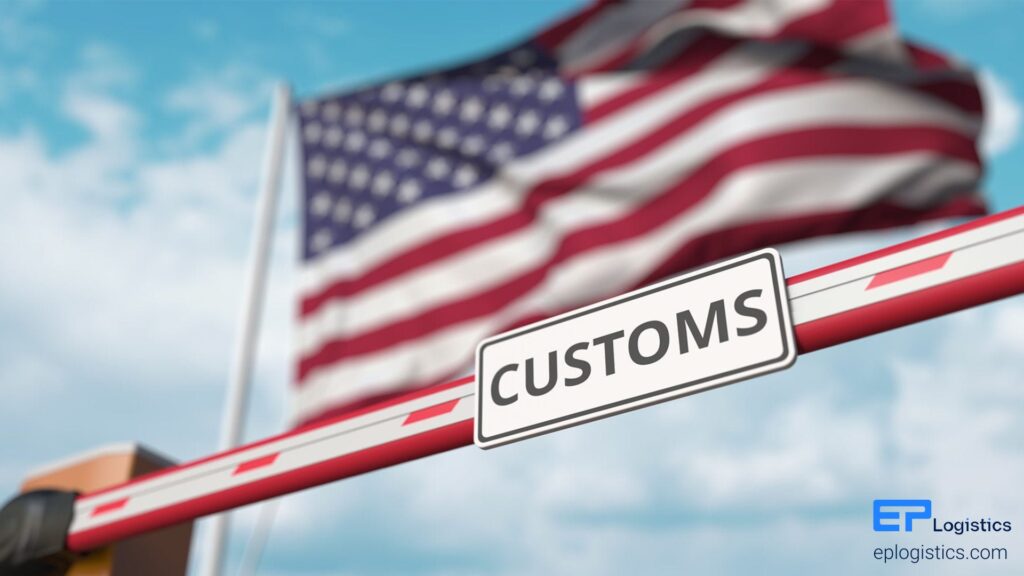With Tariffs at Historic Highs, Businesses Must Find Ways to Cut Import Duties
The U.S. average effective tariff rate hit 17.3% in 2025, the highest level since 1935, according to the Yale Budget Lab. For import-heavy businesses, that’s not just a historical milestone, it’s a serious financial challenge.
Companies that fail to implement import duty reduction strategies face mounting cost pressures that can eat into margins and slow growth.
But smart importers see the opportunity. Reducing duty costs isn’t just about saving money, it frees up cash flow for reinvestment and expansion. And the best part? You don’t have to risk compliance to get results.
The Impact of Rising Import Tariffs
The financial toll of rising tariffs is growing fast. Recent data shows that the current tariff regime will cost U.S. households an average of $2,400 by the end of 2025.
Meanwhile, imported cargo volumes are rising. U.S. ports handled 12.6 million TEUs in the first half of 2025, with major ports reporting year-over-year growth of 4–5%. (Note: national totals may vary depending on the reporting method.)
These tariffs directly impact your bottom line by increasing product costs, disrupting supply chains, and complicating inventory management. Without tariff reduction strategies, these rising costs will either compress your margins or force price increases that may hurt your competitive position.
For manufacturers and distributors, particularly those operating across the U.S.-Mexico border, implementing strategic duty reduction approaches has become essential rather than optional.

Duty Reduction Strategies for Importers
1. First Sale Valuation
First Sale Valuation allows importers to declare the value of goods based on the first sale in the supply chain rather than the final sale price to the importer.
This strategy can significantly reduce the dutiable value of your imports. For example, if a manufacturer sells to a middleman who then sells to you, you can use the lower manufacturer-to-middleman price for customs valuation methods.
To qualify, importers must demonstrate that both transactions are legitimate “arm’s length” sales and keep complete documentation of the transaction chain. Companies using this approach typically save 10-20% on duties, depending on the product, transaction structure, and documentation requirements.
Requirements for Implementation
- Verifiable proof that both sales are legitimate and at “arm’s length”
- Complete documentation of both transactions
- Correct billing that reflects the true first sale price
- Ability to demonstrate that goods were clearly destined for export to the U.S.
2. Foreign Trade Zones (FTZs)
Foreign Trade Zones function as designated areas that, while physically located within the United States, are considered outside U.S. Customs and Border Protection for duty purposes.
When you place goods in an FTZ, you can use duty deferral programs until the products enter the U.S. or avoid them entirely if the goods are re-exported. For manufacturers, FTZs offer the additional benefit of paying duties on either the imported components or the finished product, whichever has the lower duty rate.
EP Logistics provides specialized FTZ operations as part of our extensive cross-border logistics solutions, enabling clients to maximize these benefits while ensuring full compliance.
Benefits Beyond Duty Savings
- Reducing merchandise processing fees by filing weekly entries rather than one shipment at a time
- Duty deferral results in improved cash flow.
- No duties on rejected, damaged, or scrapped goods
- Simplified customs procedures and reduced paperwork
3. Duty Drawback Programs
Duty drawback allows importers to reclaim up to 99% of duties paid on imported goods that are subsequently exported or used in the manufacture of exported goods.
This choice could result in significant financial recovery, particularly for companies that import components or materials that are then exported. More U.S. importers now use drawback programs to reduce duty costs in 2025.
Types of Drawback
- Direct Identification Drawback. Reclaims duties on the same imported items that are later exported.
- Substitution Drawback. Allows recovery of duties when similar (not identical) goods are exported.
- Manufacturing Drawback. Applies when imported materials are used to manufacture products for export.
The documentation requirements are stringent, but the financial benefits make this well worth the effort for many businesses.
4. Free Trade Agreements and Preference Programs
Free Trade Agreements (FTAs) can eliminate or reduce duties on qualifying goods traded between partner countries.
For businesses based in North America, the United States-Mexico-Canada Agreement (USMCA) is especially beneficial. Other significant agreements include those with Australia, Singapore, Korea, and various Central American nations.
Your products must comply with certain rules of origin that confirm adequate processing or content from the FTA partner countries to be eligible for FTA benefits.

Maximizing FTA Benefits
- Know the specific rules of origin for your products inside and out
- Maintain proper documentation from suppliers to prove the origin
- Implement systems to track and verify qualifying content percentages
- Consider supply chains’ optimization to increase FTA-qualifying content
5. Tariff Engineering and Classification Optimization
Tariff engineering involves legally modifying products to qualify for better duty rates under the Harmonized Tariff Schedule (HTS).
This approach requires understanding how small changes to a product’s characteristics, components, or assembly process can affect its classification. For example, adding a specific feature might shift the product into a different HTS category with a lower duty rate.
Classification Optimization
- Review product classifications regularly for accuracy
- Consider how minor product modifications might affect classification
- Consult with customs experts to identify potential savings opportunities
- Obtain binding rulings from customs authorities when classification is unclear
6. Supply Chain Restructuring
Strategic supply chain restructuring can significantly reduce your duty exposure by shifting sourcing or manufacturing to countries with lower or zero tariff rates.
With U.S. tariffs on certain Chinese goods reaching as high as 50%, many companies are diversifying their supplier base to include countries not subject to these high duties. According to the ECORN Agency, supply chain restructuring remains one of the most powerful long-term strategies for avoiding high tariffs.
Implementation Considerations
- Evaluate total landed cost, not just duty savings
- Evaluate new suppliers’ quality, compliance, and dependability
- Consider phased implementation to minimize disruption
- Factor in lead times, logistics costs, and potential supply chain risks
7. Bonded Warehouses Operations and Temporary Importation
Bonded warehouses allow you to store imported goods without paying duties until they’re withdrawn for domestic consumption. This option improves cash flow by delaying duty payments. If the goods are later exported rather than entered into U.S. commerce, you can avoid duties entirely.
Temporary Importation Under Bond (TIB) offers another option for goods that will remain in the U.S. temporarily before being exported. This allows duty-free entry for up to one year, with possible extensions.
Applications
- Seasonal inventory management
- Holding goods while awaiting favorable market conditions
- Processing or manipulating goods before final customs clearance
- Staging inventory for just-in-time delivery to customers
In EP Logistics, we offer warehousing services options that include bonded warehouse facilities, helping importers manage their duty deferral strategies.
8. Valuation Strategies and Cost Unbundling
To lower the total value subject to duties, customs valuation strategies concentrate on legally separating dutiable from non-dutiable costs.
Many importers overlook the fact that certain costs included in their commercial invoices may be excluded from the dutiable value. These might include:
- Post-importation services (installation, maintenance)
- A few license fees and royalties
- Interest charges
- Buying commissions
- International freight and insurance (in some cases)
By properly unbundling these costs and ensuring they’re documented separately, you can significantly reduce your dutiable value.
9. Supplier Negotiations and Cost Sharing
You can lower your overall duty costs and share the burden of tariffs by engaging in proactive supplier negotiations.
As tariff rates increase, importers should consider renegotiating terms with suppliers to share the impact. Changes to incoterms, price adjustments, or payment terms that enhance cash flow are a few examples of this.
Negotiation Strategies
- Request different invoices for items that are taxable and those that are not
- Negotiate terms for delivery duty paid (DDP), in which the seller bears the cost of the duties
- Explore cost-sharing arrangements for tariff increases
- Consider longer-term contracts with price protection clauses
10. Trade Compliance Technology and Expertise
Advanced trade compliance technology can identify duty-saving opportunities while ensuring regulatory adherence.
Modern trade compliance software can automatically analyze your import data to identify classification errors, FTA opportunities, and potential duty recovery options. These systems can also streamline documentation and reporting requirements.
Combining technology with expert guidance provides the most comprehensive approach. Customs specialists can identify strategies you may have overlooked and help implement complex programs like duty drawback or first sale valuation.
Building a Duty Reduction Strategy
Instead of depending on a single strategy, successful importers combine several strategies. Start by reviewing your current import operations to find which strategies offer the best returns for your product mix, supply chain, and business model
Remember that proper documentation is essential; customs authorities will examine duty reduction claims closely, so maintain detailed records for all strategies you use.

Steps to Develop Your Strategy
- Review your import data to find high-duty products and countries
- Rank strategies by potential savings and how difficult they are to implement
- Create a step-by-step implementation plan with clear goals
- Train all team members involved
- Review and adjust your approach regularly as regulations and business needs change
How EP Logistics Can Help
In EP Logistics, we offer expertise in cross-border logistics and customs compliance to help importers reduce duties.
With our extensive experience in U.S.-Mexico trade, EP Logistics provides solutions including Foreign Trade Zone operations, customs brokerage services, and warehousing options to reduce duty costs while maintaining compliance.
For manufacturers in the electronics, automotive, and medical industries, we develop approaches that address specific industry challenges and opportunities in duty management.
Our customs experts help you work through complex regulations, use strategies like first sale valuation or duty drawback, and ensure your documentation meets requirements for duty reduction.
Partnering with us at EP Logistics provides you with access to the expertise and capabilities needed to turn import duty management into a business advantage.



